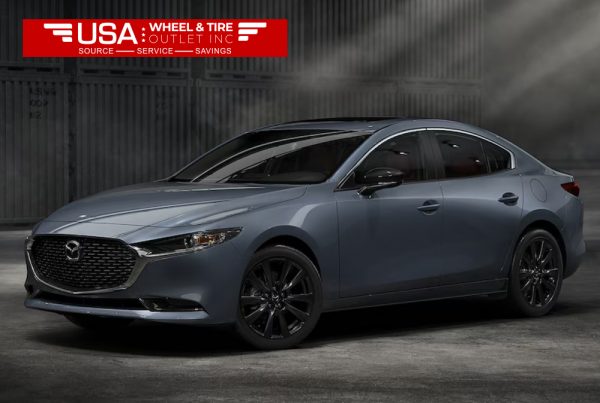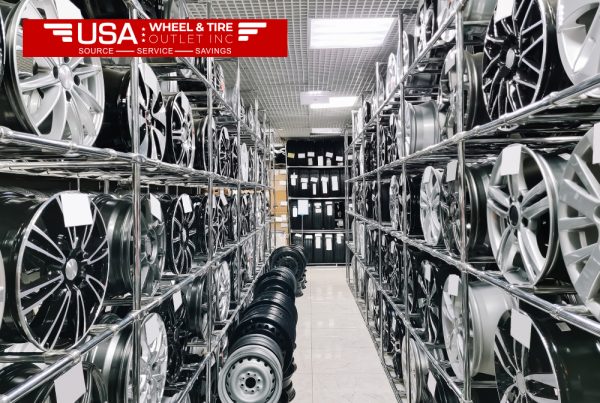Several popular brands stand out when it comes to automobiles beginning with “K”. These brands offer a wide range of vehicles – from affordable sedans to luxury hyper cars to environmentally friendly electrics. Brands such as Kia and Koenigsegg KTM cater to different needs and preferences. No matter what model or brand, choosing the right tire can improve performance and safety while extending durability.
Tires can enhance your driving experience by improving fuel economy and handling. This guide will show you how to choose the right tires, regardless of whether your vehicle is a compact Kia car or a Koenigsegg performance car or a Kenworth truck. The tire requirements will be discussed for the most popular car manufacturers that start with “K”. This guide will help you select the best tires.
1. Popular Car Brands that Start with K
Kia
Kia is a household name, and it’s known for its reliable and affordable vehicles, like the Sportage and Optima. These models have been used extensively in long-distance travel and for daily commutes.
Requirements for tires: The majority of Kia vehicles need all-season, well-balanced tires that work in both dry and wet conditions. Kia vehicle tires come in 215/55R17 sizes for sedans and 235/65R17 sizes for SUVs.
Brands we recommend: Michelin Bridgestone Goodyear
2. Koenigsegg
Koenigsegg has the highest level of performance and luxury in sports cars. The Jesko RS and Agera RS models are made for speed and accuracy.
Tire requirements High-performance tires with superior grip and extreme speeds.
Consider Michelin Pilot Sport, Pirelli P Zero. Continental SportContact.
KTM
KTM’s lightweight sports cars and motorbikes are well-known, but the company also puts a focus on performance.
Karma Automotive
Karma Automotive produces luxury electric cars such as the Karma Revero which combine eco-friendliness and elegance.

Kenworth
Kenworth is an expert in heavy-duty trucking that’s ideal for long-distance transportation and freight hauling.
Tire Selection is Important
The correct tire is more than choosing the right size. It can have a direct influence on your vehicle’s safety, performance, and efficiency. With the right tires, you will be able to maintain better stability and traction in all conditions. It will decrease the likelihood of an incident and improve your driver’s self-confidence.
Tire selection can also have a significant impact on fuel economy. Low rolling resistance tires can be a great option to improve fuel economy, especially for electric vehicles like those produced by Karma Automotive. Sports vehicles such as Koenigsegg are fitted with high-performance rubber to improve speed and response. Kenworth tires are durable and provide long-distance performance.
Tire sizes, tread pattern and durability are important factors to consider when choosing the right tires for your driving style. The tread pattern affects the grip on either dry or wet surfaces. It is essential to get the right size for balance and alignment. Durable tires save money and prolong tire life.
You can drive either a Kia car or a Koenigsegg. KTM Karma Kenworth A comfortable, efficient ride is ensured by investing in the right set of tires. This guide can help you make the right decision for your vehicle.
The third section: How to choose tires
1. Tire Specifications
Safety and performance are dependent on the correct tire size. Tire size codes, such as P215/60R16, provide valuable information.
16 represents the wheel diameter (in inches). The manufacturer will recommend the tire size. This information can be found on your driver’s door jamb or in the owner’s handbook.
2. Patterns & Design
3. Performance ratings
Understanding load indexes (e.g. Optimizing performance is dependent on understanding speed ratings (H = 130 mph), load indices, and other factors. Sedans should be balanced. SUVs will have greater loads, and sports cars need superior speed ratings.
Weather Conditions HTML4_4
Tires made for extreme weather can enhance safety. Winter tires have better traction when it comes to snow. Summer tires are made for hot weather. All-weather tire offers convenience and versatility but they might not perform well under extreme weather conditions.
Durability
Consider the treadwear warranty and expected mileage. Premium tires often have longer warranties and are more durable. By balancing price and performance, you will get the best deal.
Tire Brand Recommendations
1. Kia Models
2. Koenigsegg Models
Ultra-high-performance vehicles require premium tires like Michelin Pilot Sport 4S or Pirelli P Zero. Supercars demand tires with exceptional handling, speed and stability.
3. KTM Models
The cornering performance and grip of lightweight sports cars and motorbikes are prioritized. Michelin Road 5 & Pirelli Diablo Rosa III are excellent in rainy weather.
4. Karma Automotive Models
Eco-friendly vehicles benefit from low-rolling-resistance tires, enhancing efficiency. Bridgestone EcopiaEP422plus and Michelin Energy Saver provide the best combination of fuel efficiency and performance.
Kenworth Trucks HTML5_
Long-haul trucks require heavy-duty tire to maximize their mileage and capacity. Goodyear Endurance LHD Tires and Michelin X Line Energy Z offer durability, fuel efficiency and stability.
The recommendations are tailored according to the needs of each car. To get the best results, select tires that are suitable for your driving style.
Tire Maintenance Tips
Correct Inflation Pressure Checks
For safety as well as performance, it is crucial to maintain an ideal tire pressure. Every month, use a tire gauge to measure the pressure. You can find the manufacturer’s recommended PSI in your owner’s handbook or on the door frame for the driver’s side. Underinflated tire can lead to excessive wear and tear as well as poor fuel economy. It may also cause overheating which could result in a blowout. Overinflation reduces traction and makes tires more vulnerable to damage. Overinflation can also cause uneven wear on the tread. If you want to ensure that your tires are operating at their best, make sure you adjust the pressure, especially during temperature changes.
Regular Tire Rotation
Rotating your tires every 5,000-7,000 miles will ensure that you get even tread wear, and also extend the tire’s life. Uneven tire tread wear can lead to poor handling and reduced grip. In front-wheel drive cars, rear and front tire wear patterns are distinct. By maintaining a consistent rotation schedule, you can balance tire wear patterns while increasing stability and optimizing performance.
Alignment and Balancing
It is essential to maintain a balanced alignment and balance in order to avoid uneven tire wear. They also improve the vehicle’s stability. Misalignment is evident by uneven tread patterns or steering wheel vibrations. Inspections are a great way to detect any alignment problems early. Balanced tires last longer.
Tread Depth Monitor
To ensure safety, check tread depth on a regular basis. Insert a penny, Lincoln’s face down, into the tread. When the top of Lincoln’s head can be seen, it is time to change your tire. It is legal to have a tread depth of 2/32″, but replacing tires that are 4/32″ deep will improve grip on wet surfaces. For optimal performance, always monitor tread depth.
Tire swaps during the season
Switching between summer and winter tires can help you improve your grip in varying weather conditions. Avoid damage by storing unused tires somewhere cool and dry. Tire bags and covers protect tires from UV radiation, moisture, and rot.
Tires: Where to buy them?
Finding quality tires is made easier by trusted retailers. Tire shops with certification offer warranties, professional installations and safety inspections. Tire Rack, Discount Tire Direct and Tire Rack offer a variety of tires with customer reviews. They also deliver to your home. You can also find reliable options at local auto repair shops or dealerships. Certified retailers will ensure that you receive the best advice, genuine products and the right fit. The tire’s performance and life will be improved. Compare warranties, prices and services to ensure that you make the best decision.
The conclusion of this article is:
The right tire can make a big difference in your car’s safety, performance and fuel economy. Consult the manufacturer’s recommendations before choosing tires for cars that begin with “K”. By performing routine maintenance like pressure checks, alignments and rotations you can prolong the life of your tires. Maintaining the quality of tires can be achieved by investing in tire exchanges during specific seasons and storing them properly. Buying from trusted retailers and having a professional installer install your tires can help you increase performance and safety. These tips will ensure that your tires are in a good condition, and you have a safe and smooth driving experience.
Read Also: Cars That Start with A: Tire Recommendations for Top Models
<,/u>
FAQs
1. What would be the best tires for my Kia Koenigsegg, or other car model?
The type, driving habits, and climate of your vehicle will all influence the tire that is right for you. When choosing a tire for your Kia, you should consider comfort, durability, and fuel efficiency. Koenigsegg should have high-performance tires that are designed for superior grip, handling and speeds. For personalized recommendations on tires, consult the manual of your vehicle or a tire specialist.
2. What’s the difference between all-season and performance tires?
All-season tire performance is reliable in all weather conditions. This includes light rain, snow and ice. These tires work well for everyday driving. Performance tires are designed for better handling, acceleration and cornering. They are ideal for sports cars like a Koenigsegg. They could wear out quicker in cold and rainy weather conditions.
3. Can I mix tire brands?
Tires with different tread patterns, sizes, and performance characteristics can be difficult to mix. Tires mixed together can impact braking, handling and stability. To ensure safety and optimal performance, choose tires that match your vehicle.
4. How often do I need to replace my tires?
After six years, tires should still be changed even if in good condition. Replace tires when tread depth falls below 2/32 of an inch. Search for cracks and bulges. Sports cars may need more frequent replacements due to high-performance demands.
5. What tires are required for Koenigsegg and other luxury sports cars?
To match the speed, handling and brake requirements of luxury sports cars, high-performance tire are needed. These tires were designed to offer maximum traction at high speed, as well as durability and safety. They offer optimal performance on road and track.

